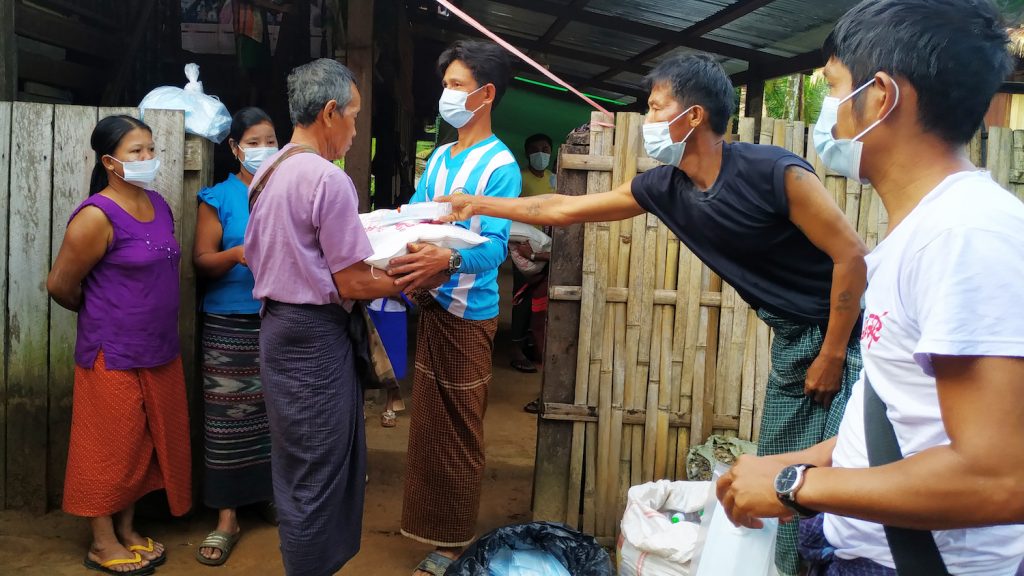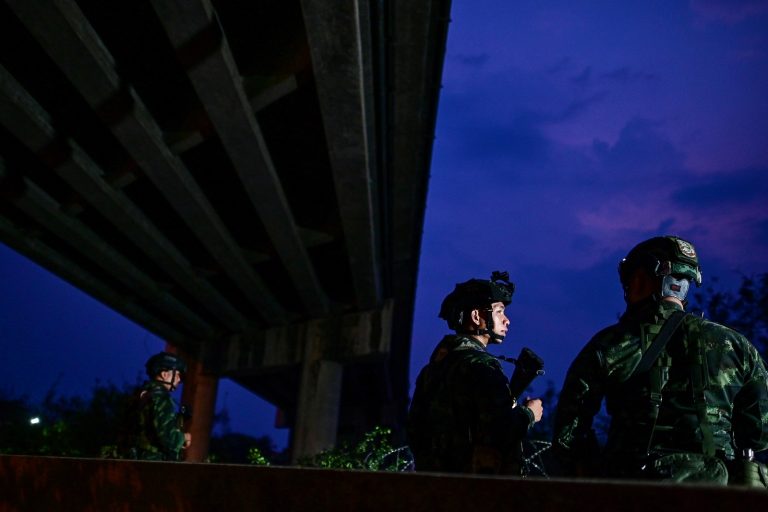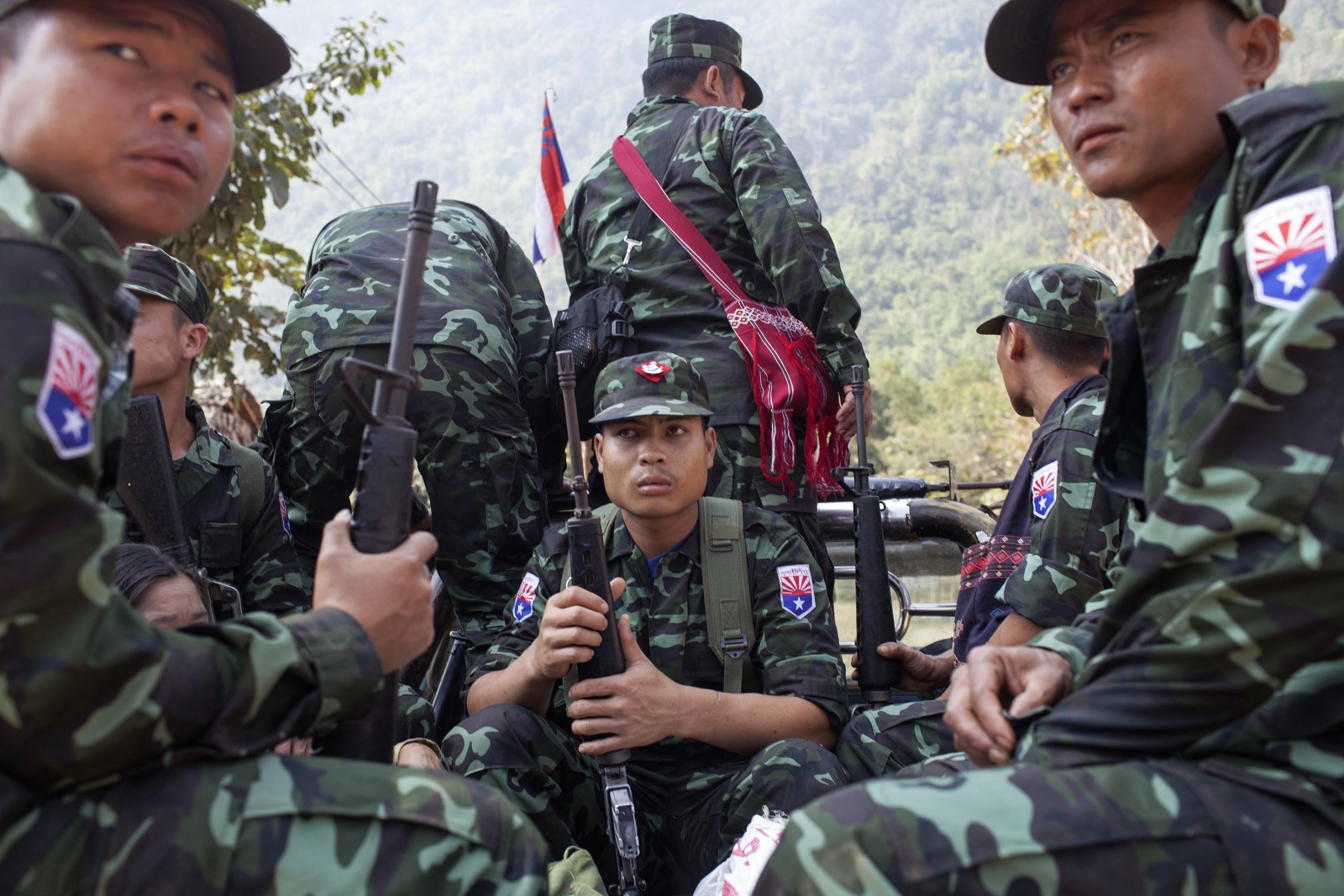The government said its COVID-19 economic relief plan would leave no one behind, but displaced communities in remote areas of Mon and Kayin states and Tanintharyi Region are struggling to survive and receiving little support.
By AUE MON and JANEEN SAWATZKY | FRONTIER
To alleviate the economic distress caused by the COVID-19 pandemic, the Myanmar government launched the COVID-19 Economic Relief Plan on April 27. In the foreword, State Counsellor Daw Aung San Suu Kyi claimed that CERP would leave “no one behind” and be a “whole-of-nation response”.
However, the National League for Democracy government has failed to include some internally displaced persons and vulnerable groups living in remote areas, including in Mon and Kayin states and northern Tanintharyi Region.
CERP proposes several relief measures – such as cash transfers – to support the most vulnerable and needy, and specifically mentions IDPs. But in the early planning stages, the government failed to adequately consult humanitarian organisations to ensure its COVID-19 response plan included IDPs and remote communities living in areas under the control of ethnic armed groups, or in areas of mixed control. This has resulted in some IDPs missing out on financial and in-kind support.
It is also unclear how the government plans to support and collaborate with ethnic health organisations or civil society to ensure an inclusive COVID-19 response. It is essential for the authorities to work with these groups on the ground so that they can identify what financial and health interventions are needed, and how they can be implemented. Without meaningful collaboration, it is difficult to assess properly what health and economic measures are needed to mitigate the impact of this crisis.
This failure is particularly evident in areas of Mon and Kayin states under the control of the New Mon State Party, a signatory to the Nationwide Ceasefire Agreement, or mixed-control with the government or other ethnic armed groups. In May, after failing to receive any monetary support during the first handout in April, the NMSP’s COVID-19 Controlled and Response Committee submitted a list of 14,000 households in their controlled areas to receive support from the Mon State government. However, to date, only 3,500 households have received the financial support and most are in Ye Township, close to areas under government control.
This indicates gaps in strategic planning at the Union level and in distribution of aid to IDPs in remote areas by state administrations. The government must ensure all communities have equal access to support programmes and priority should be given to the most vulnerable communities.
Interviews and data collected by the Human Rights Foundation of Monland in IDP villages in Mon and Kayin states, and in remote communities in areas administered by the NMSP, found that villagers, who were already impoverished, are suffering significant hardship due to the economic consequences of COVID-19.
The severe restrictions on movement imposed by township authorities and ethnic armed groups to prevent the spread of COVID-19 have had the biggest impact. For some IDP communities in areas contested by the government and NMSP, the movement restrictions have stopped them from accessing farm plots and daily wage labour. In other areas, IDPs have been banned from foraging in forests. While most of these restrictions were lifted during the first week of July, the impact on remote communities has been severe. Limited opportunities to tend fields and store food for the rainy season have left many IDPs concerned about their ability to survive through the rainy season.
Meanwhile, mandatory quarantine for thousands of returning migrant workers has placed an added burden on these communities, because they are expected to provide food to returnees and volunteers to enforce the strict health regulations. The large influx of returnees in Mon State included more than 15,500 migrant workers in the first week of April alone who were subject to a mandatory 14 days quarantine. Later that month, quarantine for returnees was extended to 21 days in community-based facilities, compounding the strain on communities that already have limited resources.
The return of migrant workers has been particularly difficult for 12 IDP villages in Ye Township. About 40 to 80 people have returned to each of the 12 villages, which are unable to provide basic foodstuffs and COVID-19 prevention equipment such as facemasks, hand sanitiser and personal protective equipment, or PPE.
Many IDPs in these remote communities were already impoverished but now they are destitute and unable to feed their families, including young children. The risk of food shortages is real.
“Although some restrictions have been lifted, it is already too late because the rainy season has begun. We did not have a chance to work to collect and store foods during the dry season,” Nai San Oo, 44, from the Baleh Doon Phite IDP site, told the Human Rights Foundation of Monland.
To meet this emerging humanitarian crisis, the government must review its budget plans and allocate more funds to rural ethnic minority areas that have high numbers of IDPs and conflict-affected communities. The government should also consult with IDPs, community-based organisations and humanitarian groups on a separate COVID-19 economic response plan specifically targeted at remote and IDP communities and implemented in collaboration with ethnic armed groups, so that these vulnerable populations receive access to the aid they so desperately need.







